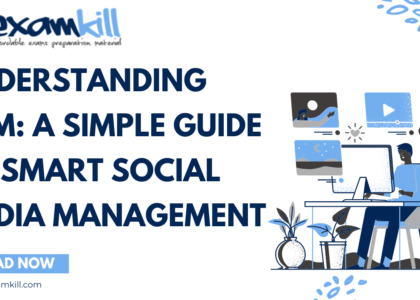Managing contractors is one of the trickiest parts of running a safe and efficient workplace, especially when your site has high-risk hazards like moving machinery, working at heights, or dealing with hazardous substances. That’s why every responsible employer should know how to manage external teams under a structured Safe System of Work (SSOW).
When you get it right, you not only protect your people but also avoid surprise costs and legal headaches. And speaking of costs, businesses often overlook hidden expenses like the OSHA Fee and certification costs that add up fast if a contractor violates safety rules on your site.
Let’s break down how to handle contractors under an SSOW — step by step — so you can breathe easy knowing you’ve done it properly.
Why Managing Contractors Properly Matters
Imagine this: a construction company hires a subcontractor to repair a roof. The crew doesn’t follow safety measures because they think “we’ve done this a hundred times before.” One slip, and an injury happens. Now, not only is the contractor hurt, but the hiring company faces lawsuits, downtime, and possible fines.
Sadly, this scenario is common. Poor contractor management has been behind some of the worst workplace accidents globally. A Safe System of Work helps ensure that everyone — from permanent staff to temporary teams — knows exactly how to do the job safely.
Step 1: Choose the Right Contractors
Never pick the cheapest option blindly. Vet each contractor carefully:
- Check their past work, safety record, and references.
- Confirm they hold up-to-date insurance and valid certifications.
- Ask about their experience handling similar workplace hazards.
A real-world example: A warehouse owner once shared how paying slightly more for a certified electrical contractor prevented a near-miss with faulty wiring that could have shut down operations for weeks.
Step 2: Define Clear Roles and Responsibilities
Before any work begins, document who is responsible for what. This should include:
- Who supervises the contractor daily.
- Who has authority to stop work if something unsafe happens.
- What emergency contacts are available on-site.
This simple step avoids the blame game when problems arise. It’s amazing how much confusion you prevent by spelling things out upfront.
Step 3: Develop a Specific Safe System of Work for Each Task
A generic SSOW won’t cut it for every job. Tailor a clear, practical method statement and risk assessment for each task. For example:
- Describe each step of the work process.
- Identify possible hazards, like working near flammable materials.
- State the control measures and emergency procedures.
Contractors must read and agree to these documents. One site manager I interviewed joked that he “treats SSOW documents like recipes — follow them exactly, and you won’t burn the house down.”
Step 4: Provide an Effective Induction
Contractors are often unfamiliar with your site’s unique risks. Hold an induction session that covers:
- Site layout, restricted areas, and hazards.
- Specific safety rules, PPE requirements, and reporting procedures.
- How to respond if an alarm sounds.
Use easy language and visuals — never assume people “just know.” This short session saves time and reduces confusion later.
Step 5: Monitor and Supervise Regularly
Even the best SSOW plan is worthless without proper monitoring. Assign a competent supervisor to:
- Observe the work frequently.
- Correct unsafe behavior on the spot.
- Keep records of inspections.
One supervisor I know brings extra gloves and helmets in his truck. If a contractor forgets PPE, he hands it over immediately rather than wasting time sending them back to the office.
Step 6: Keep Good Communication Flowing
Build trust and openness. Encourage contractors to:
- Report near-misses without fear of punishment.
- Speak up if they spot a hazard.
- Suggest improvements to the SSOW.
A trusted contractor once told me how he reported a weak scaffolding board before it collapsed, preventing a serious accident. Open communication saved money and possibly lives.
Step 7: Review Performance and Learn Lessons
Once work is done, don’t just tick it off and move on. Evaluate:
- Were there any incidents or close calls?
- Did the contractor follow the SSOW properly?
- What could be improved for next time?
Use these findings to update your contractor management procedures. This ongoing loop helps build a safer culture for everyone.
Common Mistakes to Avoid
While managing contractors under an SSOW sounds simple, watch out for these common pitfalls:
- Rushing the induction — skipping this step leads to confusion and unsafe shortcuts.
- Using outdated SSOW documents — keep risk assessments fresh and relevant.
- Ignoring small breaches — one overlooked safety rule can quickly escalate.
- Failing to check sub-contracting chains — sometimes your contractor hires another team without your knowledge. Always verify who’s on your site.
Legal and Cost Implications
Failing to manage contractors properly can lead to hefty fines, downtime, and bad press. Companies have faced lawsuits worth millions for not providing clear SSOW guidelines to visiting workers.
Plus, think about the hidden costs: paying an extra OSHA Fee, retraining staff after an incident, or covering compensation for injured workers. Preventive spending on proper SSOW systems is always cheaper in the long run.
Build a Safety-First Reputation
Clients trust companies with a solid safety reputation. Word spreads fast in industries like construction, oil & gas, or heavy manufacturing. By managing contractors well, you show clients you care about people and quality. This can win you repeat contracts and new business.
A trusted site supervisor once told me, “We’d rather spend more upfront on managing contractors than risk paying ten times more cleaning up a disaster.” Wise words!
Final Thoughts: It’s Worth the Effort
Building a strong SSOW for contractors takes effort — but every checklist, induction, and supervision round helps protect your team, your money, and your reputation. It’s the kind of investment that pays off every day work happens safely and everyone goes home unharmed.
Remember: no plan is perfect forever. Keep improving it, ask your contractors for feedback, and adapt as work conditions change.
Read more about how to handle hidden costs OSHA Certification Cost to plan your budget wisely.
Conclusion
Contractors bring skills and flexibility that help your projects succeed. But without clear safety systems, they can also bring risks. Following these key steps to manage them under an SSOW protects your people, meets your legal duties, and keeps your projects on track.
Take the time to choose the right teams, spell out safety rules clearly, supervise with care, and keep learning. Your workplace will thank you for it — and so will your bottom line.






